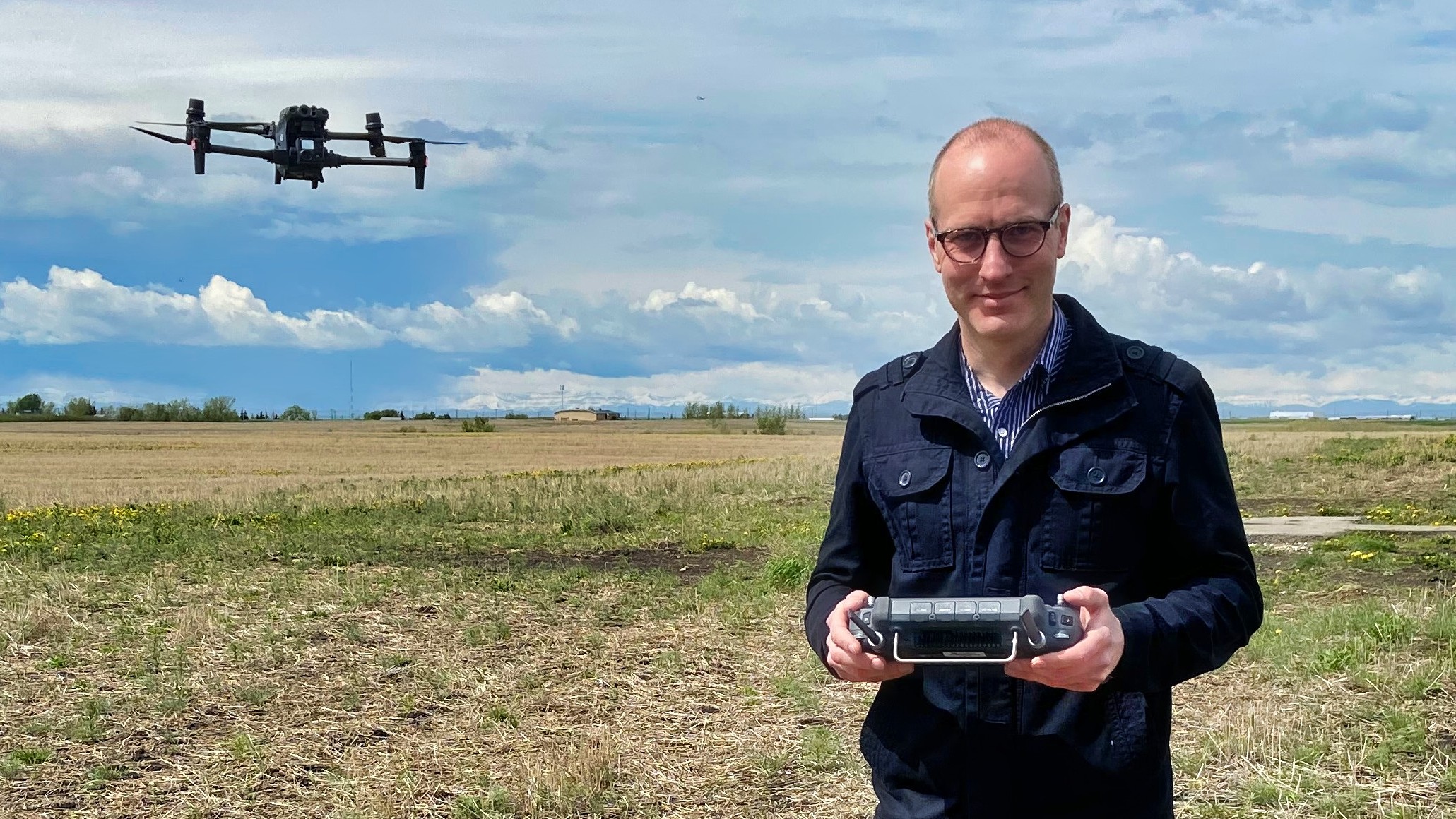When it was all said and done, a 2021 wildfire near the community of Tomahawk, Alta., raged for two months, charred an area of forest equivalent to 5,500 football fields and razed a dozen structures.
It was also the largest wildfire that University of Alberta engineering professor Jeff Boisvert had faced in the two years since he’d begun moonlighting as a paid-on-call firefighter in Parkland County.
“It was a different beast,” he says. “We really couldn’t put enough water on it to put it out — crown fires burn that hot.
"You don’t really know where exactly the fire is a lot of the time, and not knowing also dictates how we respond to it.”
It was the “not knowing” part of managing that fire that sent Boisvert back to the engineering lab. Firefighting is a side hustle, and his main gig lies in using artificial intelligence to create spatial models that optimize mining operations. He was determined to test whether he could apply this expertise to make better use of data to fight wildfires.
To help, Boisvert turned his attention to an under-studied element of the wildfire triangle of predicting fire growth and intensity: fuel.
“Trees — especially coniferous trees and the crown fires they produce — grass and shrubs are things we don’t always have a good handle on,” he says.
The ultimate goal is to use drones to map in advance the wildland-urban interface — where community meets forest — in an effort to make better operational decisions. This kind of mapping helps planners create better evacuation plans and implement better fuel mitigation, while adding another level of real-time data to improve the survivability of structures at risk from wildfire.
“A lot of my research is trying to package this information in a way that it could be valuable to the incident commanders,” says Boisvert.
Not only did this work reveal the benefit of drones in fighting wildfires, but Boisvert and his team also began to envision a myriad of ways their work could affect the real-time situational awareness of emergency personnel. Maybe he could fight fires more effectively from his lab.
So he took a leave from his firefighting duties and refocused his lab’s drone work to include the development of human-centred AI systems in an effort to improve decision-making during emergency response. The technology his team is working on includes smoke and hotspot detection, but could expand to weapon detection for law enforcement or locating and diagnosing life-threatening injuries in advance of EMS response. Other features include suspect detection and scene management/digital twin creation, which can be imagined as a three-dimensional model of a house fire or a car accident that gives emergency services personnel more immersive information before they even arrive on the scene.
“We don’t just want to stream the video to first responders before they are on scene,” he says. Instead, the drone provides responders with data that creates information to aid in decision-making.
Boisvert notes this technology is much closer to becoming a reality than people think. Unfortunately the hurdles that remain go beyond regulatory barriers. In a time of fixed emergency-service budgets, making the case for drones as first responders (DFR) might be the most important part of Boisvert’s work.
“How much benefit do these systems bring? Nobody really knows how to quantify that, but that’s what we intend to find out.”
He adds that there are only two dozen or so DFR programs in use in North America. And while they are starting to make a real difference, they are still considered a luxury.
Boisvert and his team have just begun work with a selection of emergency service organizations, including the Olds Fire Department, to see whether they can make the case for wider use of this emergency response tool.
Justin Andrew, fire chief of the Olds Fire Department, says the potential opportunities of a DFR program paired with the advances in artificial intelligence are limitless. “This technology will enhance early warning, create more effective response and ultimately reduce loss.”
Boisvert adds, “Hopefully we can put numbers to the value that drones are providing to 911 response, and then use that work to encourage municipal, provincial and federal emergency services to use modern drone programs.”
Boisvert’s wildfire work is supported by an NSERC Alliance Grant and funding from the Canadian Space Agency.
